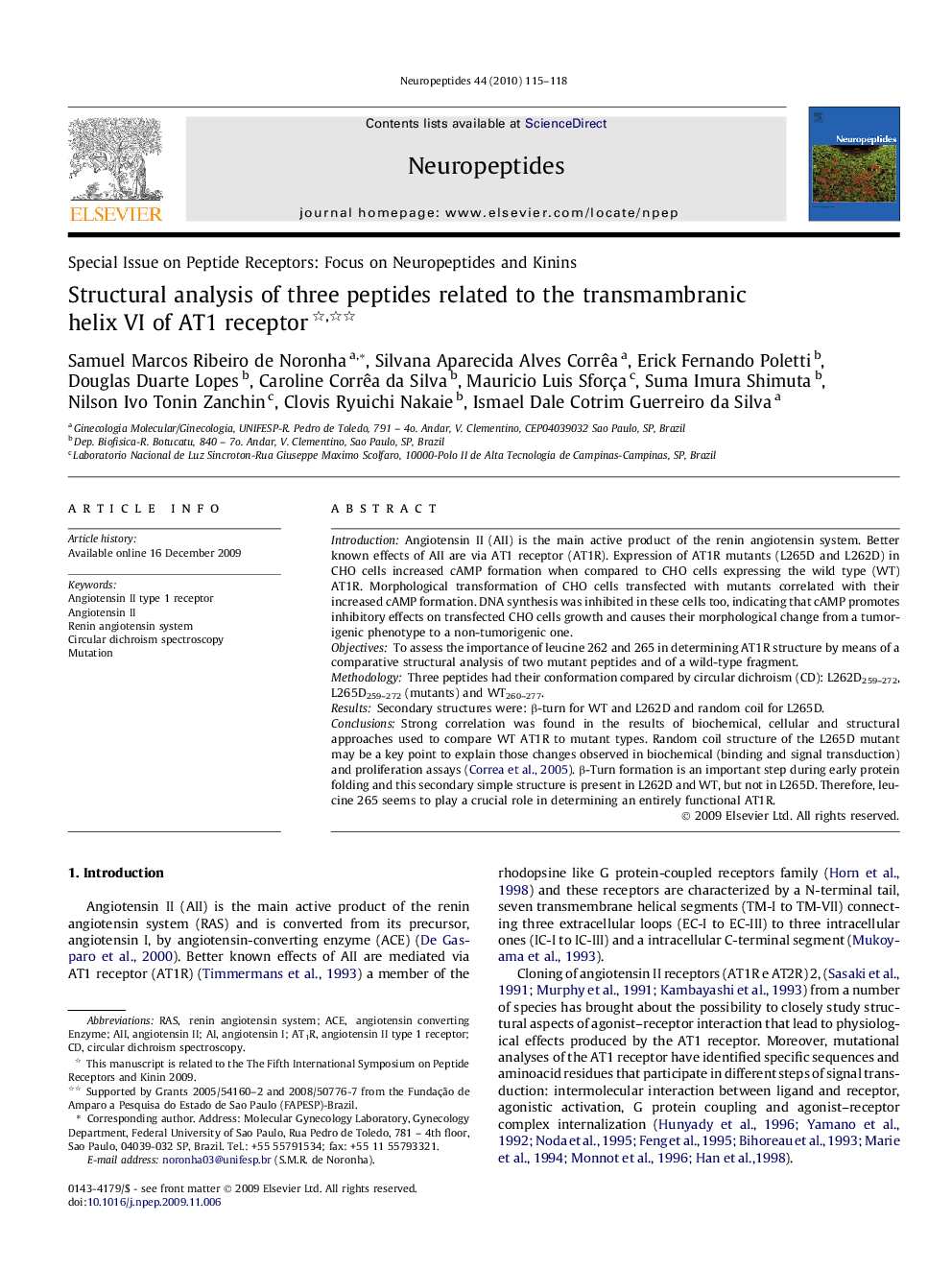| Article ID | Journal | Published Year | Pages | File Type |
|---|---|---|---|---|
| 2808235 | Neuropeptides | 2010 | 4 Pages |
IntroductionAngiotensin II (AII) is the main active product of the renin angiotensin system. Better known effects of AII are via AT1 receptor (AT1R). Expression of AT1R mutants (L265D and L262D) in CHO cells increased cAMP formation when compared to CHO cells expressing the wild type (WT) AT1R. Morphological transformation of CHO cells transfected with mutants correlated with their increased cAMP formation. DNA synthesis was inhibited in these cells too, indicating that cAMP promotes inhibitory effects on transfected CHO cells growth and causes their morphological change from a tumorigenic phenotype to a non-tumorigenic one.ObjectivesTo assess the importance of leucine 262 and 265 in determining AT1R structure by means of a comparative structural analysis of two mutant peptides and of a wild-type fragment.MethodologyThree peptides had their conformation compared by circular dichroism (CD): L262D259–272, L265D259–272 (mutants) and WT260–277.ResultsSecondary structures were: β-turn for WT and L262D and random coil for L265D.ConclusionsStrong correlation was found in the results of biochemical, cellular and structural approaches used to compare WT AT1R to mutant types. Random coil structure of the L265D mutant may be a key point to explain those changes observed in biochemical (binding and signal transduction) and proliferation assays (Correa et al., 2005). β-Turn formation is an important step during early protein folding and this secondary simple structure is present in L262D and WT, but not in L265D. Therefore, leucine 265 seems to play a crucial role in determining an entirely functional AT1R.
